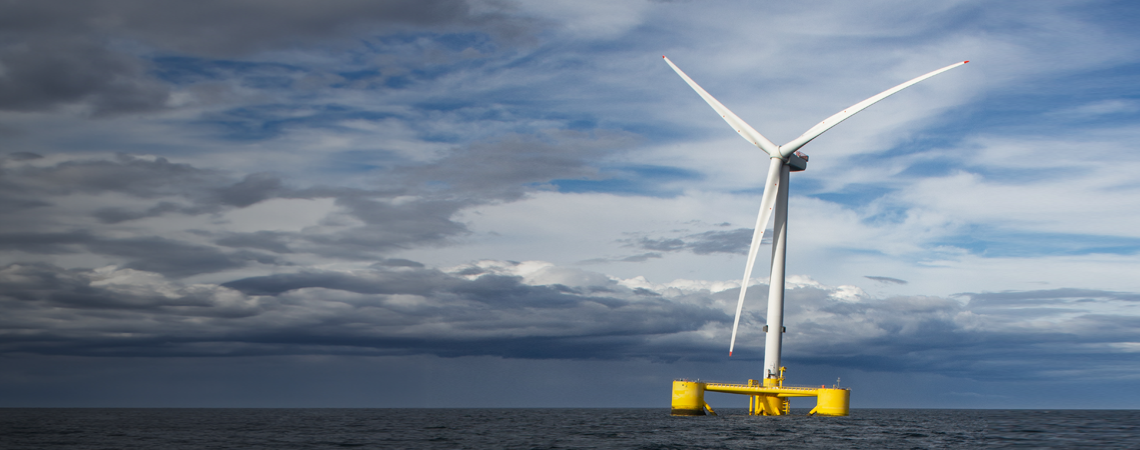Don’t stop here
There’s much more to discover!

In the North Sea, Vårgrønn, the Norwegian joint venture between Plenitude and HiTecVision, together with partner Flotation Energy, will build GreenVolt, the world's largest floating wind farm, with a capacity of up to 560 MW.
GreenVolt will become a reality, thus opening a new chapter in the field of offshore wind on floating foundations. With a nominal capacity of up to 560 MW, which is about twice the total capacity currently operating in Europe based on this technology, it will be the largest floating offshore wind farm in the world to be contracted for energy sales. Its construction, supported by a significant government incentive scheme, will make a major contribution to the decarbonization of the North Sea and Scotland and will be a central piece in the plans of Vårgrønn, the wind company controlled by Plenitude (65 percent) and HiTecVision (35 percent), which aims to have 5GW of wind power, operational or licensed, in Northern Europe by 2030. Its importance, however, transcends the numbers: in fact, GreenVolt will be a further impetus in the construction of other offshore wind farms, thanks to the development and aggregation of a supply chain specializing in the construction of floating plants. This solution based on anchoring the turbines to the seabed with steel cables will open new development spaces for the wind sector in all marine areas characterized by deep seabed, including the Mediterranean Sea. In fact, in front of the Italian coasts, Plenitude is already pursuing several projects, directly and through GreenIT, an Italian joint venture (Plenitude 51 percent, CDP Equity 49 percent) active in the production of electricity from renewable sources.
The Green Volt wind farm will consist of 15 MW floating turbines, capable of producing 1.5 TWh of electricity per year. It will be located about 80 kilometers off the northeastern coast of Scotland, where the sea reaches depths of 80 to 100 meters, and according to the project timeline, the floating wind turbines and associated transmission facilities will be put into operation starting in 2030.
The award of the CfD (contract for difference) in the UK, announced in September 2024, is one of the key moments in the development of this project, which began with the identification of an area deemed optimal for distance from the coast, depth, wind potential, and proximity to oil and gas fields. Indeed, one of GreenVolt's main goals is to contribute significantly to the North Sea Transition Deal, the plan signed between the UK and the UK oil and gas industry in 2021 to reduce emissions from oil and gas extraction. On the website dedicated to the GreenVolt project, it is also possible to learn more about the environmental impact aspects, assessment and measures that will be put in place to mitigate the effects on fish species, including migratory fish, mammals and birds, as well as local commercial (fishing) and sporting (surfing) activities. The know-how gained in this area, too, will be invaluable for current and future projects of Vårgrønn, which has made it one of its goals to become one of the first nature-positive offshore wind operators.
There’s much more to discover!
Storage capacity, from home batteries to utility-scale storage plants, is a key element for the future of the energy transition.
From traditional stores to experiential shops where digital solutions and physical supports interact to showcase the home of the future, making you feel at home.
The continuously evolving scenario of energy, with its various complexities, requires technologies, investment, perseverance and commitment. This means that there is a great opportunity to accelerate the transition through the deployment of solar and wind